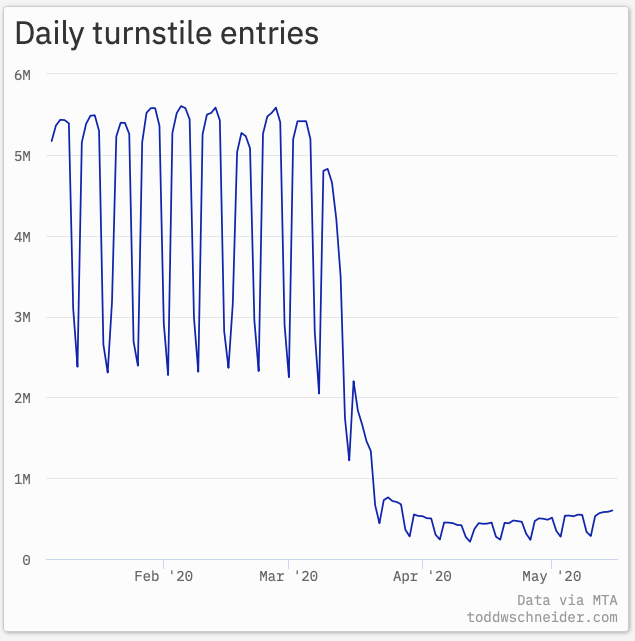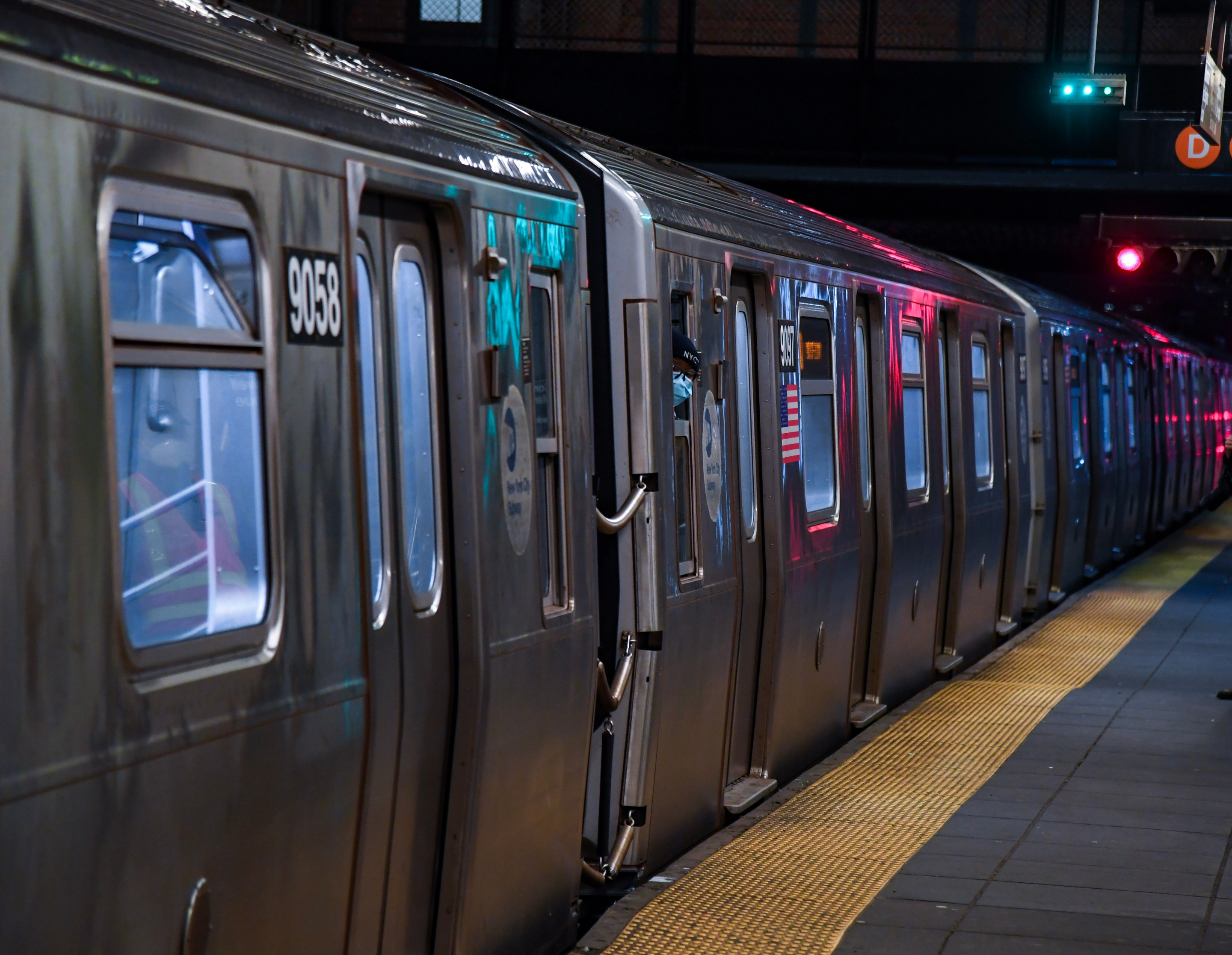Subway ridership is ticking up slowly but surely, new turnstile data show, but straphangers are still not coming back as fast as drivers.
According to Todd Schneider, who crunches the MTA's publicly available data, 600,952 people rode the subway on Friday, May 15 — the first time the subway carried that many riders since 676,556 people rode on March 27.

The slight increase is more than statistical noise, but still shouldn't be seen as a solution to the MTA's ridership problem.
"The magnitude of the increase is very small relative to normal ridership, so I wouldn’t read into it much," said TransitCenter spokesman Ben Fried. "The 'pause' order is still in effect, so it’s premature to expect big shifts in subway ridership."
Fried is right that subway ridership isn't growing as fast as motor vehicle traffic. The subway hit a low point of 2,625,058 total riders during the week ending on April 11 and has risen to 3,484,525 riders during the week ending on May 9, a 32-percent rise. Up on the streets, vehicle miles traveled rose from 21,630,000 miles on March 30, one week into PAUSE, to 34,240,000 miles on May 8, an increase of 58 percent.
"What’s troubling is that car traffic seems to be increasing pretty rapidly already, even while we’re technically on pause," said Fried.
The total VMT is still lower than "normal," but the fact that car traffic rising more rapidly than mass transit ridership should be setting off alarm bells in City Hall, especially after the New York Stock Exchange announced it would bar returning traders from using public transportation.
However, Mayor de Blasio was de blaséo about the situation, neglecting to take issue with the public transportation ban and not offering any ideas on how to keep lower Manhattan from becoming a car-choked sewer.






